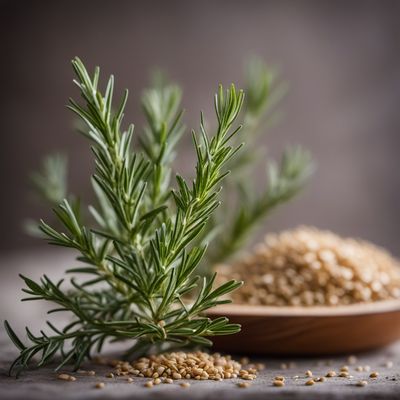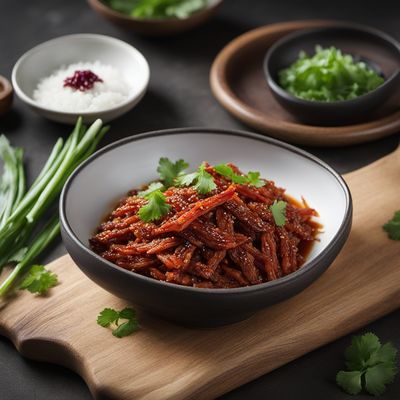
Ingredient
Santolina
The Aromatic Herb: Santolina
Santolina is a perennial herb that belongs to the Asteraceae family. It is characterized by its small, needle-like leaves that are covered in fine hairs, giving them a fuzzy texture. The herb has a strong, pungent aroma reminiscent of camphor and a slightly bitter, earthy taste. Its appearance adds a pop of color and texture to dishes, making it a versatile ingredient in both savory and sweet recipes.
Origins and history
Santolina is native to the Mediterranean region, particularly Spain and Italy, where it has been used for centuries in traditional medicine and culinary practices. It was believed to have medicinal properties and was used to treat various ailments. The herb's name is derived from the Latin word 'santus,' meaning holy, due to its historical association with religious rituals. Today, santolina is cultivated in many parts of the world for its culinary and ornamental purposes.
Nutritional information
Santolina is low in calories and does not provide significant amounts of macronutrients. However, it contains essential oils, such as camphor and cineole, which have been associated with potential health benefits, including anti-inflammatory and antimicrobial properties.
Allergens
There are no known allergens associated with santolina.
How to select
When selecting santolina, look for fresh, vibrant leaves that are free from discoloration or wilting. The leaves should have a strong, pleasant aroma. Avoid any plants that show signs of disease or pest infestation. If purchasing dried santolina, ensure that it is stored in an airtight container to maintain its flavor and aroma.
Storage recommendations
To store fresh santolina, wrap the stems in a damp paper towel and place them in a plastic bag. Store in the refrigerator for up to one week. Dried santolina should be stored in an airtight container in a cool, dark place to preserve its flavor and aroma for several months.
How to produce
Santolina can be easily grown in a sunny location with well-draining soil. It is drought-tolerant and requires minimal maintenance. Start by planting santolina seeds or young plants in the desired location, ensuring they have enough space to grow. Regular pruning will help maintain the plant's shape and encourage bushier growth.
Preparation tips
Santolina leaves can be used fresh or dried in various culinary preparations. They are commonly used to infuse oils, vinegars, and spirits, adding a unique flavor and aroma to dressings, marinades, and cocktails. The herb can also be used to flavor soups, stews, roasted meats, and grilled vegetables. Additionally, santolina leaves are sometimes used in baking to add a subtle herbal note to cookies, cakes, and pastries.
Culinary uses
Santolina is commonly used in Mediterranean cuisine, particularly in dishes from Spain and Italy. It is a popular ingredient in herb-infused oils and vinegars, as well as traditional liqueurs like Chartreuse. Santolina is also used in herbal teas and potpourri due to its aromatic properties.
Availability
Santolina is widely available in Mediterranean countries, such as Spain, Italy, and Greece. It can also be found in specialty herb stores and online retailers that offer a wide range of culinary herbs and spices.



